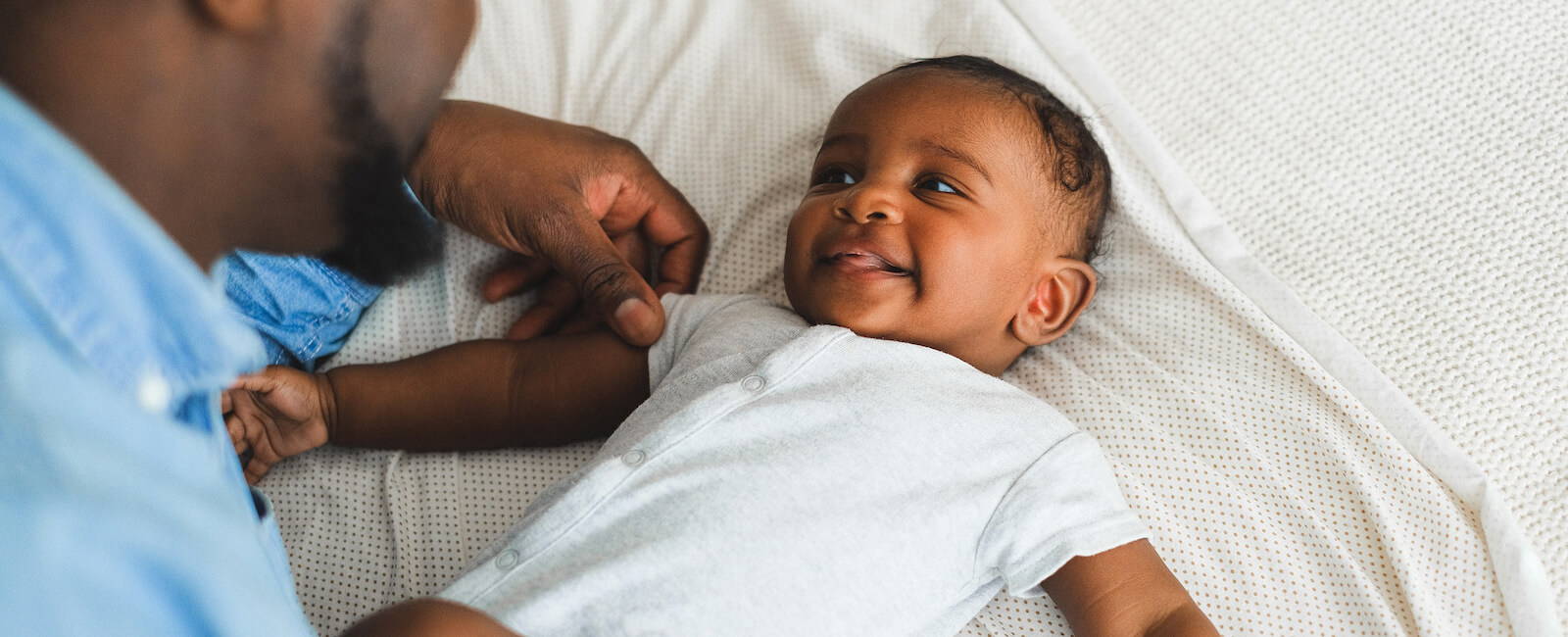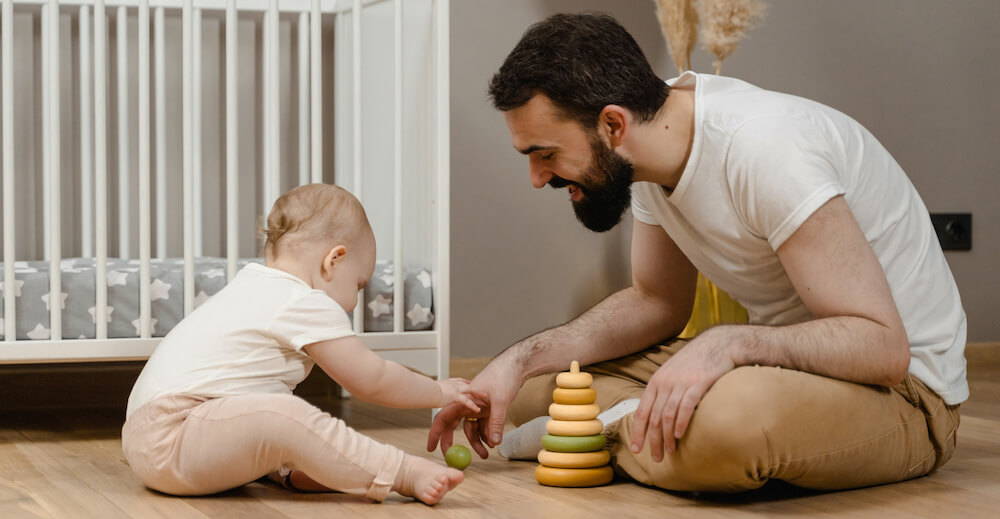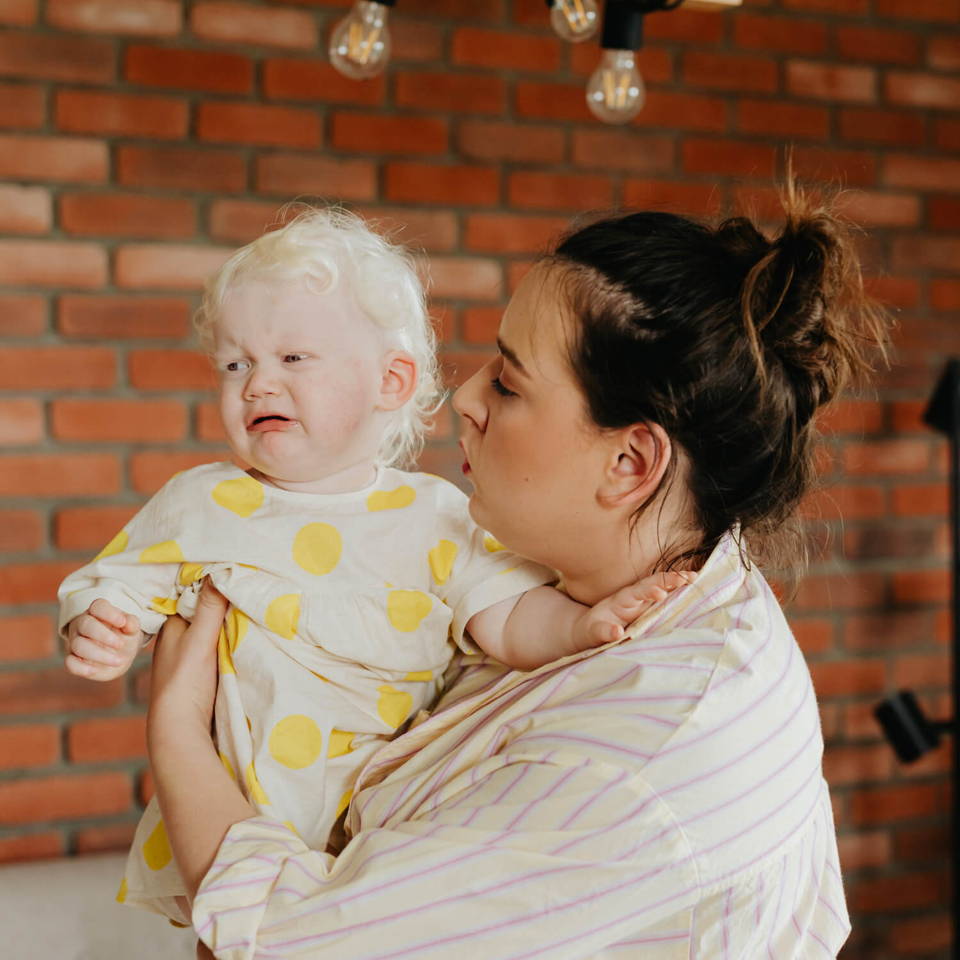EMMA
Dec 1, 2022
What Is Object Permanence &
How Babies Learn About It?
Let me start with a quick question for you young parents: When your newborn baby is not in your sight (for example, when he or she is sleeping soundly in the room), do you think your little one has disappeared?
Many parents may admit that they feel anxious when they can't see or hear their little one. But when we can't see or hear our child, we can still confirm his presence -- he or she hasn't disappeared, he or she is just temporarily out of sight. This feeling is so ingrained that it is easy to forget that this is an acquired ability. This ability is what we call "object permanence".

“For something we can't see or hear, we know that it is still there, not gone.”
A. What is object permanence?
"Object Permanence" is a term used by the famous Swiss cognitive psychologist Piaget to describe the state of cognitive development in infancy and childhood. It means that for something we can't see or hear, we know that it is still there, not gone.
A newborn infant will see himself or herself as one with the world, and if a person or something is out of sight, the infant will think that the person or thing has disappeared.
It is not until about eight months of age that the concept of the object's permanence will begin to germinate. That's why you'll find infants very clingy when they haven't yet acquired this ability -- as soon as you leave, the little one will start crying until you reappear.

B. Games of Peek-a-boo and object permanence
I used to not quite understand why parents all over the world seem eager to play Peek-a-boo with their newborn babies, and why all the world's little babies will have the same reaction - parents are happy to use their hands to cover their face or baby's eyes, and then remove their hands to reveal a big smile - and the baby will also be amused. So repeatedly, you can have fun anytime, anywhere.
It was not until I had a child that I learned that this game is actually the embodiment of the principle of object permanence. My favorite game was covering my little daughter's bunny doll with her favorite blanket. At first, she thought her bunny had instantly disappeared and was a little indifferent, but as soon as the blanket was quickly lifted up, she smiled. It did not take long for her to lift the blanket herself, feeling that she could already tell that the rabbit had not disappeared. It may not seem like much to adults, but I was a little moved by it -- how many other things do we take for granted that we struggled to learn from our vulnerable infancy?
All in all, the concept of object permanence is also the basis for developing time and space concepts, logical thinking, causal relationships, and play skills. By hiding the doll under the blanket and then lifting the blanket repeatedly, we are showing the child a cause-and-effect relationship: because the blanket is lifted, the toy hidden underneath can be seen. In addition, when the blanket covers the toy, the child can search for past memories in his mind and remember that the toy was under the blanket before, so he can take the action of lifting the blanket to find it.
C. When does object permanence develop?

The development of the concept of "object permanence" involves several stages:
Newborn to 4 months
Infants are in a state where they have no concept of the permanence of objects. If a person or object leaves their sight, the infant may observe for a while, and if the object does not reappear immediately, the infant immediately puts the matter behind him or her, literally, out of sight, out of mind.
4 to 8 months
During this period, babies become increasingly interested in the outside world: they begin to explore everything around them with their hands and mouths, and they begin to play with toys (they drop their toys sometimes because they are still learning how to grab); when a part of a toy is covered with a towel, they can find it. If you place the toy behind him, he will try to turn his head and look for the toy; however, he will choose to remain indifferent to items that are completely covered by a towel.
8 to 12 months
At this stage, the concept of object permanence begins to develop rapidly, and the baby can already find completely hidden objects. However, Piaget found an interesting phenomenon at this point: if he hid the toy in hiding place A, he could find it immediately; but if the baby saw the toy change from hiding place A to place B, the baby would still go to place A where he had found the toy before. In Piaget's terms, the baby was unable to keep up with the process of a series of displacements.
12 to 18 months
The concept of object permanence is further developed during this period. By letting the baby see how the adult hides his toy, they can follow the sequence of position changes and go straight to the last hiding place for the toy. However, if the baby does not see the hiding process, he will still be very confused.
18 to 24 months
This is a period when the toddler can keep up with the process of changing positions that he has not witnessed. For example, if the ball that the baby is playing with rolls under the couch, the baby will go around the couch to reach for the ball. This is because the baby has the ability to imagine the trajectory of the ball and the direction it might go in a situation that he or she has not witnessed; the act of "going around the couch to retrieve the ball" shows that the baby has not only developed spatial awareness, but also the ability to choose different paths to reach the same location (the baby is not crawling under the couch to retrieve the ball).
D. Object permanence and separation anxiety
A problem closely related to the concept of "object permanence" is "separation anxiety." To understand separation anxiety in babies as we’ve discussed before, just put yourself in your little one's position: if you had to rely on someone for almost everything, when you find this person disappeared, how vulnerable and helpless would you be?
When a parent leaves a baby, the baby "remembers" being with the parent, but is not sure if the parent will return after leaving, thus creating anxiety.
Therefore, parents should pay more attention to the needs of their infants and interact with them more often to help them develop an understanding of object permanence. In addition to telling the child in advance that you are leaving, it is important to reassure him that you will return; and when you return as scheduled, let him know that you are back and have not disappeared. By repeating this process, you are building up a sense of discipline and trust, your child can expect you to come back, and will no longer be afraid of your departure.

